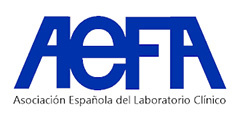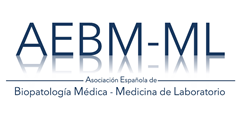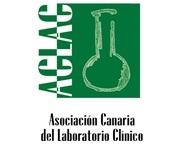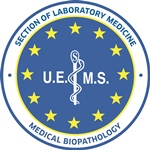Originales
Rangos de referencia de cadenas ligeras libres en suero de Trimero Diagnostic por turbidimetría. ¿Pueden ser universales los puntos de corte?
Luis J. Morales-García, María S. Pacheco Delgado
 Número de descargas:
16060
Número de descargas:
16060
 Número de visitas:
9106
Número de visitas:
9106
 Citas:
0
Citas:
0
Compártelo:
Introducción: el análisis de cadenas ligeras libres en suero (CLL) se ha incorporado a las guías del International Myeloma Working Group para el diagnóstico y tratamiento de las gammapatías monoclonales. Estas recomendaciones se basaron únicamente en un único ensayo (Freelite) e instrumento. Aquí establecemos nuevos rangos de referencia (RR) para CLL kappa y lambda, para la diferencia y la suma kappa-lambda y un nuevo rango de diagnóstico para la ratio kappa/lambda de CLL (K/L-CLL) en un AU5800 (Beckman Coulter) con el reactivo de Trimero Diagnostic. Material y métodos: para establecer nuevos RR se aplicó el protocolo CLSI EP28-A3C a 247 muestras de donantes de Fuenlabrada (Madrid, España) y se obtuvo la estimación del 95 % central y rango total. Se utilizaron muestras de pacientes con hipo e hipergammaglobulinemia policlonal para la evaluación de K/L-CLL como índice de proliferación monoclonal. Resultados: los nuevos RR y el nuevo rango de diagnóstico de K/L-CLL para Trimero (0,44-1,23 mg/L) son muy diferentes a los de las guías (0,26-1,65 mg/L). Proponemos nuevos RR para la diferencia K-L y la suma K+L. La validación del rango diagnóstico como índice de proliferación monoclonal con muestras con hipo- e hipergammaglobulinemia confirman este nuevo rango. Conclusiones: en este estudio presentamos RR de CLL para reactivo de Trimero medidos en un AU5800. Estos rangos son diferentes a los proporcionados por el fabricante y a los utilizados en la mayoría de los estudios y pueden conducir a una clasificación errónea de los pacientes. Los fabricantes y los laboratorios clínicos deben esforzarse por proporcionar RR.
Palabras Clave: Rango de referencia. Intervalo de referencia. Mieloma múltiple. Cadenas ligeras libres de suero. Gammapatía monoclonal.
DOI: 10.1177/2040620712466863
DOI: 10.1016/S1470-2045(14)70442-5
DOI: 10.1093/clinchem/48.9.1437
DOI: 10.1016/j.clinbiochem.2012.12.015
DOI: 10.1016/j.clinbiochem.2017.05.009
DOI: 10.1016/j.plabm.2018.e00112
DOI: 10.1515/cclm-2017-0339
DOI: 10.1515/cclm-2016-0194
DOI: 10.1056/NEJMoa1114248
DOI: 10.1016/j.clinbiochem.2013.01.014
DOI: 10.1016/j.clinbiochem.2018.06.003
DOI: 10.1177/0004563212473447
DOI: 10.1002/hsr2.113
DOI: 10.1038/s41375-018-0041-0
DOI: 10.1038/s41408-019-0267-8
DOI: 10.1016/j.clml.2019.01.007
DOI: 10.1016/j.clml.2018.03.005
DOI: 10.1186/s12882-017-0661-z
DOI: 10.1016/j.jaci.2014.10.003
DOI: 10.3389/fimmu.2020.00319
DOI: 10.1007/s10875-018-0478-y
DOI: 10.3389/fimmu.2020.02004
DOI: 10.1016/j.cca.2006.07.011
Casos Clínicos: Leucemia de células plasmáticas secundaria
Alberto Vílchez Rodríguez , Rafael Lluch García , Noelia Bru Orobal
Imagen - Infografías: Infiltración de médula ósea por Leishmania spp. en paciente con mieloma múltiple
Sergio García Muñoz , Antonio García Menchón
Artículos más populares
Imagen - Infografías: Orina verde-azulada: ¿artefacto o patología?
-
Licencia creative commons: Open Access bajo la licencia Creative Commons 4.0 CC BY-NC-SA
https://creativecommons.org/licenses/by-nc-sa/4.0/legalcode











